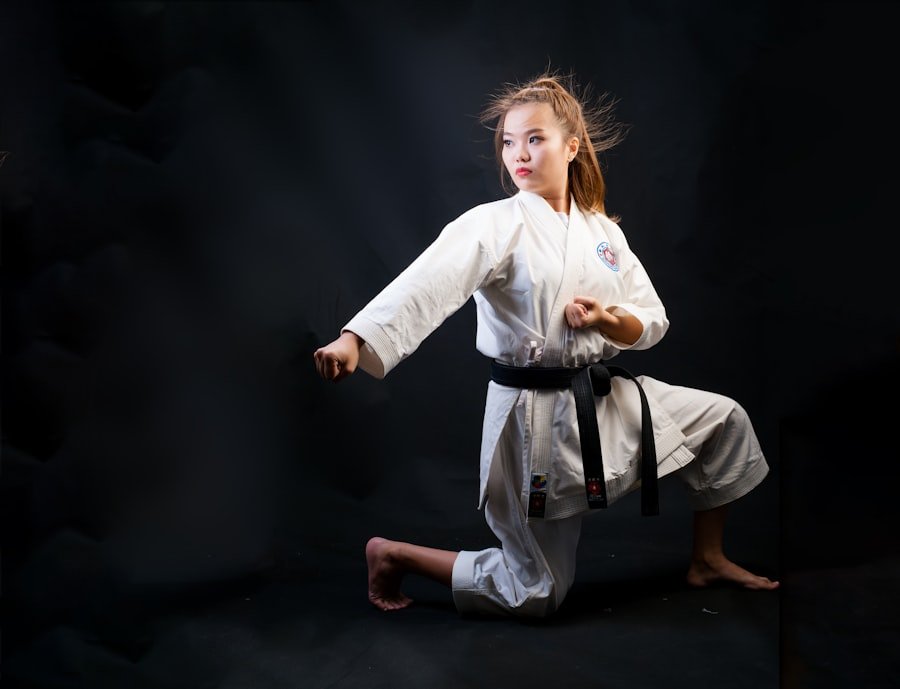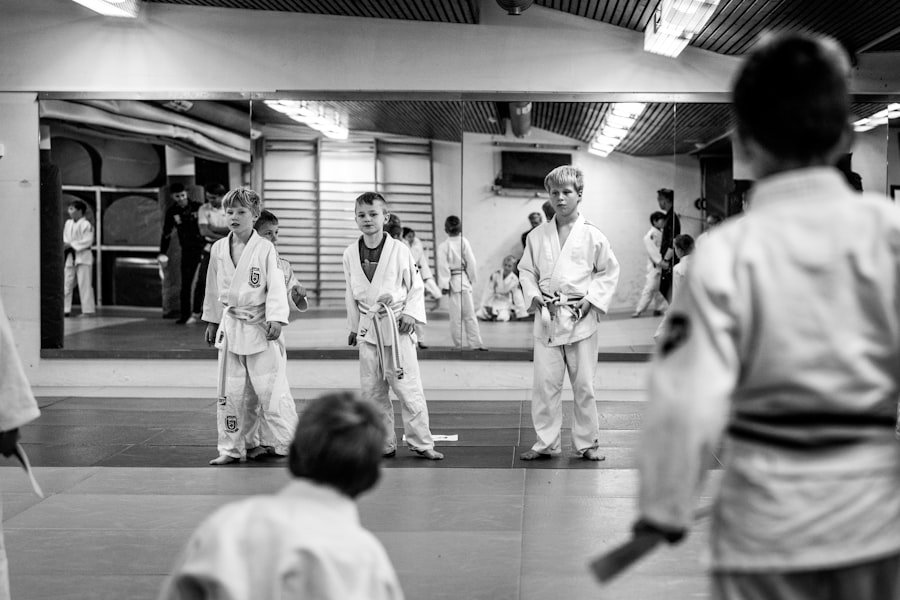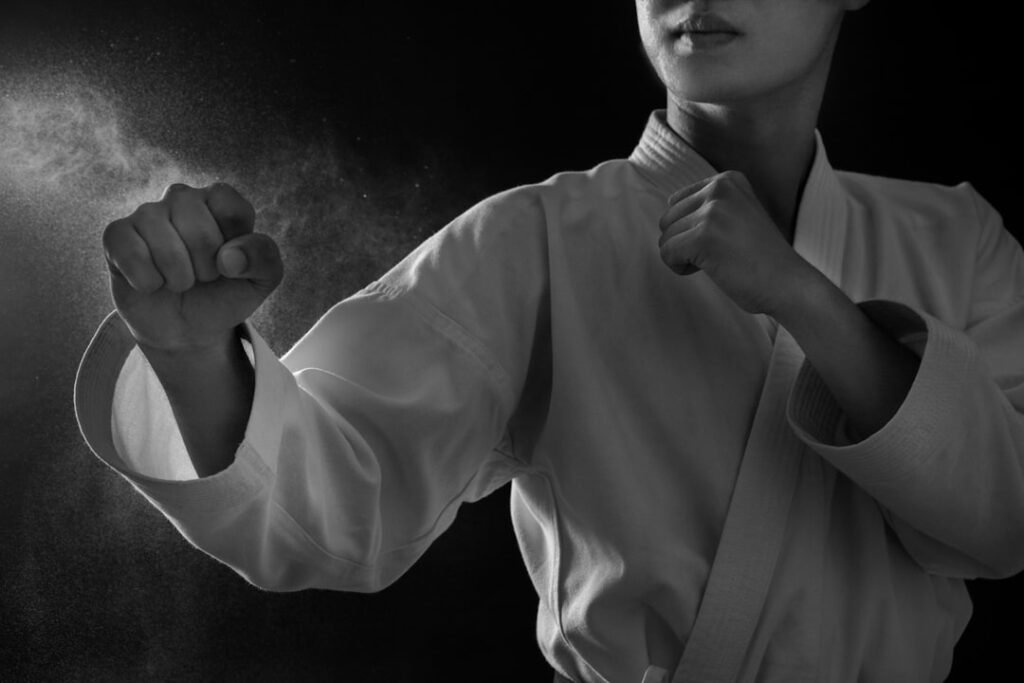In recent years, the allure of Chinese martial arts has captivated many in Oslo, drawing practitioners from diverse backgrounds and skill levels. The power of these ancient disciplines lies not only in their physical techniques but also in their philosophical underpinnings. As practitioners engage with the fluid movements and intricate forms, they discover a profound connection to a rich cultural heritage that transcends mere combat.
This connection fosters a sense of community among fighters, creating a vibrant atmosphere where individuals can share their experiences and learn from one another. Moreover, the physical benefits of Chinese martial arts are undeniable. The training promotes strength, flexibility, and endurance, which are essential attributes for any fighter.
In Oslo, where the martial arts scene is continually evolving, the integration of Chinese techniques offers a unique edge. As fighters incorporate these methods into their training regimens, they not only enhance their physical capabilities but also develop a deeper understanding of movement and strategy. This holistic approach to martial arts empowers practitioners to harness their potential fully, making them formidable opponents in any arena. Spaces are filling up fast! Register for Chinese classes at the LC Chinese School in Oslo today.
Table of Contents
ToggleSummary
- Chinese martial arts have a powerful impact in Oslo, enhancing the performance and potential of fighters in the city.
- Traditional instruction is crucial for Oslo fighters to fully grasp the techniques and strategies of Chinese martial arts.
- Exploring Chinese martial arts techniques can uncover a whole new level of command and skill for Oslo fighters.
- Deeper levels of instruction in Chinese martial arts provide a unique opportunity for Oslo fighters to enhance their mental and physical abilities.
- Discipline and focus play a significant role in Chinese martial arts training, contributing to the development of Oslo fighters’ skills and performance.
The Importance of Traditional Instruction for Oslo Fighters
Traditional instruction in Chinese martial arts is paramount for fighters in Oslo seeking to master the art. The wisdom passed down through generations provides invaluable insights into the techniques and philosophies that underpin these disciplines. In an age where modern training methods often dominate, the emphasis on traditional instruction serves as a reminder of the roots of martial arts.
It is through this lens that fighters can appreciate the depth and complexity of their practice, allowing them to cultivate a more profound respect for the art form. Furthermore, traditional instruction fosters a sense of discipline and respect among practitioners. Instructors who adhere to time-honoured methods instil values that extend beyond the dojo or training hall.
Fighters learn the importance of humility, perseverance, and dedication—qualities that are essential not only in martial arts but also in life. This holistic approach to training ensures that Oslo fighters are not merely focused on physical prowess but are also developing character and integrity, which are vital components of any martial artist’s journey.
The Command You’re Missing: Exploring Chinese Martial Arts Techniques

One of the most compelling aspects of Chinese martial arts is the vast array of techniques available to practitioners. From the graceful movements of Tai Chi to the explosive power of Wing Chun, each style offers unique insights into combat and self-defence. For fighters in Oslo, exploring these techniques can unlock new dimensions of their training, providing them with tools that may have been previously overlooked.
The command over these diverse techniques can significantly enhance a fighter’s adaptability in various situations. Moreover, the exploration of Chinese martial arts techniques encourages creativity and innovation within a fighter’s repertoire. As practitioners delve into different styles, they begin to understand how to blend techniques seamlessly, creating a personalised fighting style that reflects their strengths and preferences.
This exploration not only enriches their training experience but also fosters a sense of ownership over their martial journey. In Oslo’s dynamic martial arts community, this creative approach can lead to exciting collaborations and exchanges between fighters, further enhancing the overall experience.
Understanding the Deeper Levels of Instruction in Chinese Martial Arts
To truly appreciate Chinese martial arts, one must delve into the deeper levels of instruction that go beyond mere physical techniques. These layers encompass philosophical teachings, mental conditioning, and spiritual growth that are integral to the practice. In Oslo, where many fighters are eager to expand their knowledge, understanding these deeper levels can significantly enhance their training experience.
It is through this comprehensive approach that practitioners can cultivate a well-rounded martial artist capable of navigating both physical and mental challenges. The deeper levels of instruction also encourage self-reflection and personal growth. As fighters engage with the philosophical aspects of Chinese martial arts, they are prompted to examine their motivations and aspirations.
This introspective journey can lead to greater self-awareness and emotional resilience, qualities that are invaluable both inside and outside the training environment. In Oslo’s martial arts community, fostering this level of understanding can create a supportive network where fighters uplift one another on their respective journeys.
The Role of Discipline and Focus in Chinese Martial Arts Training
Discipline and focus are cornerstones of effective training in Chinese martial arts. For fighters in Oslo, cultivating these qualities is essential for achieving mastery over their chosen discipline. The rigorous training regimens associated with traditional Chinese martial arts demand unwavering commitment and concentration.
As practitioners dedicate themselves to honing their skills, they develop a strong work ethic that translates into all areas of their lives. Moreover, discipline and focus serve as powerful tools for mental fortitude. In the face of challenges—whether during sparring sessions or competitions—fighters who have cultivated these qualities are better equipped to maintain composure and make strategic decisions.
This mental clarity is crucial for success in high-pressure situations, allowing Oslo fighters to perform at their best when it matters most. By prioritising discipline and focus in their training, practitioners can unlock new levels of performance and resilience.
The Benefits of Incorporating Chinese Martial Arts into Oslo Fighting Styles

Incorporating Chinese martial arts into existing fighting styles offers numerous benefits for practitioners in Oslo. The unique techniques and philosophies inherent in these disciplines can complement various combat sports, enhancing overall performance and effectiveness. For instance, the fluidity and adaptability found in styles like Tai Chi can improve a fighter’s movement patterns, while the explosive power of styles such as Hung Gar can elevate striking capabilities.
Additionally, integrating Chinese martial arts fosters a more comprehensive understanding of combat dynamics. Fighters who embrace these techniques gain insights into timing, distance management, and body mechanics that may not be emphasised in other styles. This holistic approach equips Oslo fighters with a diverse skill set that allows them to adapt to different opponents and situations effectively.
As they blend these elements into their training, they become more versatile competitors capable of navigating the complexities of modern combat sports.
Unlocking the Mental and Physical Potential of Oslo Fighters through Chinese Instruction
Chinese martial arts instruction offers a unique opportunity for Oslo fighters to unlock their mental and physical potential. The emphasis on mindfulness and self-awareness inherent in these disciplines encourages practitioners to connect with their bodies on a deeper level. This connection fosters an understanding of one’s strengths and weaknesses, enabling fighters to tailor their training accordingly.
Moreover, the mental aspects of Chinese martial arts—such as visualisation techniques and breathing exercises—can significantly enhance performance under pressure. By incorporating these practices into their training routines, Oslo fighters can cultivate a calm and focused mindset that allows them to perform at their peak during competitions or sparring sessions. This holistic approach not only improves physical capabilities but also nurtures mental resilience, creating well-rounded martial artists who excel both inside and outside the ring.
The Unique Techniques and Strategies Found in Chinese Martial Arts
Chinese martial arts are renowned for their unique techniques and strategies that set them apart from other fighting styles. From intricate footwork patterns to deceptive strikes, these disciplines offer a wealth of knowledge for practitioners seeking to elevate their skills. For fighters in Oslo, exploring these unique elements can provide fresh perspectives on combat strategy and execution.
One notable aspect is the emphasis on circular movements found in many Chinese styles. These movements allow practitioners to generate power while maintaining balance and control—a crucial advantage in any fight. Additionally, the strategic use of angles and timing enables fighters to evade attacks while countering effectively.
By incorporating these unique techniques into their training regimens, Oslo fighters can develop a more dynamic fighting style that keeps opponents guessing.
How Chinese Martial Arts Can Enhance the Performance of Oslo Fighters
The integration of Chinese martial arts into an Oslo fighter’s training regimen can lead to significant enhancements in performance across various dimensions. The focus on fluidity and adaptability inherent in these disciplines allows practitioners to develop a more versatile fighting style that can respond effectively to different opponents’ tactics. This adaptability is crucial in today’s competitive landscape, where fighters must be prepared for anything.
Furthermore, the mental conditioning associated with Chinese martial arts cultivates resilience and focus—qualities that are essential for success in high-stakes situations. As fighters learn to manage stress and maintain composure under pressure, they become more effective competitors capable of executing strategies with precision. By embracing the principles of Chinese martial arts, Oslo fighters can elevate their performance levels while fostering a deeper connection to their craft.
The Cultural and Historical Significance of Chinese Martial Arts in Oslo
The cultural and historical significance of Chinese martial arts extends far beyond mere combat techniques; it embodies centuries of tradition and philosophy that resonate with practitioners worldwide. In Oslo, this rich heritage has found its way into local martial arts communities, fostering an appreciation for the cultural roots that underpin these disciplines. As fighters engage with this history, they gain insights into the values and principles that have shaped Chinese martial arts over generations.
Moreover, the cultural exchange facilitated by Chinese martial arts enriches Oslo’s diverse fighting landscape. Practitioners from various backgrounds come together to share knowledge and experiences, creating a vibrant tapestry of ideas that enhances everyone’s understanding of martial arts. This cultural significance not only strengthens community bonds but also promotes mutual respect among practitioners from different traditions.
The Future of Oslo Fighting: Embracing Chinese Martial Arts Instruction
As Oslo’s martial arts scene continues to evolve, embracing Chinese martial arts instruction will play a pivotal role in shaping its future. The unique techniques, philosophies, and cultural significance inherent in these disciplines offer valuable insights for fighters seeking to expand their horizons. By integrating traditional instruction into modern training regimens, practitioners can cultivate well-rounded skills that prepare them for success in an increasingly competitive environment.
At institutions like LC Chinese School in Oslo, dedicated courses provide aspiring fighters with access to expert instruction rooted in tradition while adapting to contemporary needs. These courses not only teach practical skills but also instil values such as discipline, respect, and perseverance—qualities essential for any successful fighter. As more individuals recognise the benefits of incorporating Chinese martial arts into their training journeys, Oslo’s fighting community will undoubtedly flourish, creating a legacy that honours both tradition and innovation for generations to come.







